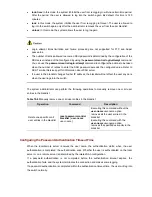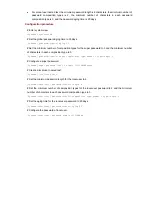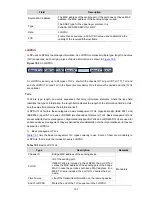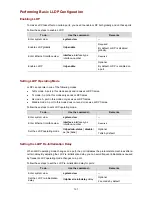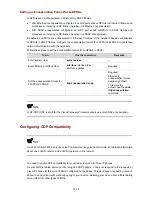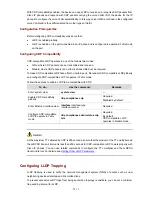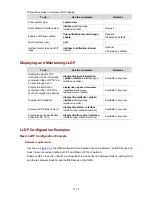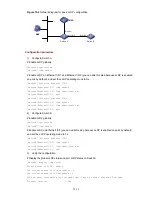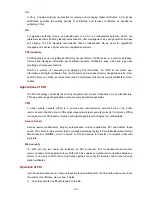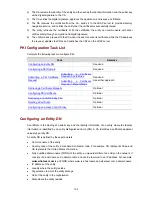
72-5
LLDP-MED TLVs
LLDP-MED TLVs provide multiple advanced applications for voice over IP (VoIP), such as basic
configuration, network policy configuration, and address and directory management. LLDP-MED TLVs
satisfy the voice device vendors’ requirements for cost effectiveness, ease of deployment, and ease of
management. In addition, LLDP-MED TLVs make deploying voice devices in Ethernet easier.
LLDP-MED TLVs are shown in
Table 72-6
:
Table 72-6
LLDP-MED TLVs
Type
Description
LLDP-MED Capabilities
Allows a MED endpoint to advertise the supported LLDP-MED TLVs
and its device type.
Network Policy
Allows a network device or MED endpoint to advertise LAN type and
VLAN ID of the specific port, and the Layer 2 and Layer 3 priorities for a
specific set of applications.
Extended Power-via-MDI
Allows a network device or MED endpoint to advertise power-related
information (according to IEEE 802.3AF).
Hardware Revision
Allows a MED endpoint device to advertise its hardware version.
Firmware Revision
Allows a MED endpoint to advertise its firmware version.
Software Revision
Allows a MED endpoint to advertise its software version.
Serial Number
Allows an LLDP-MED endpoint device to advertise its serial number.
Manufacturer Name
Allows a MED endpoint to advertise its vendor name.
Model Name
Allows a MED endpoint to advertise its model name.
Asset ID
Allows a MED endpoint to advertise its asset ID. The typical case is
that the user specifies the asset ID for the endpoint to facilitate
directory management and asset tracking.
Location Identification
Allows a network device to advertise the appropriate location identifier
information for an endpoint to use in the context of location-based
applications.
Management address
The management address of a device is used by the network management system to identify and
manage the device for topology maintenance and network management. The management address is
encapsulated in the management address TLV.
Operating Modes of LLDP
LLDP can operate in one of the following modes:
z
TxRx mode. A port in this mode sends and receives LLDP frames.
z
Tx mode. A port in this mode only sends LLDP frames.
z
Rx mode. A port in this mode only receives LLDP frames.
z
Disable mode. A port in this mode does not send or receive LLDP frames.
Each time the LLDP operating mode of a port changes, its LLDP protocol state machine re-initializes. To
prevent LLDP from being initialized too frequently at times of frequent operating mode change, an
initialization delay, which is user configurable, is introduced. With this delay mechanism, a port must
wait for the specified interval before it can initialize LLDP after the LLDP operating mode changes.


